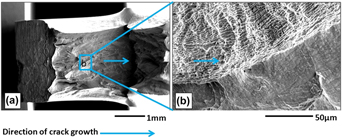Article contents
Microstructure-based modeling of the impact response of a biomedical niobium–zirconium alloy
Published online by Cambridge University Press: 30 May 2014
Abstract

This article presents a new multiscale modeling approach proposed to predict the impact response of a biomedical niobium–zirconium alloy by incorporating both geometric and microstructural aspects. Specifically, the roles of both anisotropy and geometry-based distribution of stresses and strains upon loading were successfully taken into account by incorporating a proper multiaxial material flow rule obtained from crystal plasticity simulations into the finite element (FE) analysis. The simulation results demonstrate that the current approach, which defines a hardening rule based on the location-dependent equivalent stresses and strains, yields more reliable results as compared with the classical FE approach, where the hardening rule is based on the experimental uniaxial deformation response of the material. This emphasizes the need for proper coupling of crystal plasticity and FE analysis for the sake of reliable predictions, and the approach presented herein constitutes an efficient guideline for the design process of dental and orthopedic implants that are subject to impact loading in service.
Keywords
- Type
- Articles
- Information
- Copyright
- Copyright © Materials Research Society 2014
References
REFERENCES
- 9
- Cited by




